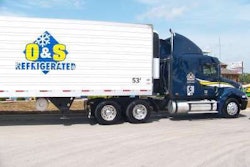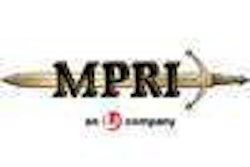How should fleets deal with a flood of information from their trucks?
Technicians at Penske Truck Leasing diagnose, repair and monitor vehicle performance across a large and diverse fleet. The complexity of their work once required various handheld scan tools, paper manuals and more than 30 separate software programs.
In 2001, Penske teamed up with Nexiq Technologies to reduce the complexity of accessing vehicle repair and service information. The two companies developed a service bay diagnostics platform called Penske Launcher. Technicians now have “one look and feel” to all vehicle diagnostics, software and service information.
When connected to a vehicle through a wireless link, Penske Launcher automatically detects what vehicle system – engine, brakes, etc. – requires work. The application pulls up the specific software program a technician needs to repair the problem.
“With the technology, we are able to get a vehicle in, diagnose and repair it, and get it back on route much quicker than in years gone by with a handheld device and paper manuals,” says Brad Shimell, manager of maintenance support for Penske Truck Leasing.
Keeping diagnostics and other PC-based software programs current used to be a challenge. With a fully networked platform, Penske Launcher is updated automatically through the Internet as Penske’s software suppliers – the original equipment manufacturers (OEM) of engines, transmissions and other components – send updates. A derivative of the Penske Launcher application is available commercially from Nexiq Technologies, says Tom Kotenko, director of sales and marketing for Nexiq.
Today’s vehicles generate a virtual library of information. The latest technologies can provide fleets with unlimited access to information that is affordable and understandable to maximize fleet profitability, even as vehicles continue to grow in complexity.
Access to information
Vehicle systems that now are controlled electronically include the engine, automated transmission, ABS system, truck bodies and refrigeration units. The “brains” of these systems, the electronic control modules (ECMs), broadcast a steady stream of files and information through a controlled area network (CAN) using standard protocols called J1708 and J1939 for heavy-duty trucks and OBD-II for light-duty vehicles.
Any number of hardware and software platforms can pick up ECM information by connecting to the diagnostics port using the 6-pin Deutsch connector, or a 9-pin USB connector on 2007 or newer vehicles.
Because vehicle data uses standard formats, companies that provide diagnostics tools for heavy-duty vehicles such as Nexiq and Noregon Systems have a single software interface to access fault codes and other information from a vehicle’s separate electronic systems.
Onboard computers and mobile communications also have become popular platforms to access ECM data. All of the major technology vendors of these systems can monitor and store ECM data and provide performance reporting and real-time alerts when fault codes appear. And the cost of hardware and software to access ECM data remotely continues to drop.
While virtually any third-party platform can access vehicles’ ECM data, only OEM software allows users to change certain ECM parameters and settings such as top speed and automatic idle shutoff, says Kevin Tomlinson, director of maintenance for South Shore Transportation, a 170-truck carrier based in Sandusky, Ohio. Tomlinson also chairs the S. 12 study group on onboard vehicle electronics for the Technology and Maintenance Council (TMC) of the American Trucking Associations.
Southeastern Freight Lines has software from all of its engine manufacturers installed on PCs at maintenance facilities. The company also downloads fleetwide data for idle time and mpg on a daily basis through its onboard computing and mobile communications system.
“We’ve been very successful with that information,” says Dave Foster, vice president of maintenance. In addition to having remote access to idle and mpg data, SEFL plans to start receiving fault codes through mobile communications. “We’ve identified 25 (fault codes) that we can look at,” Foster says. “We are going to narrow those down to determine what data we want to be sent to us.”
The use of wireless local area networks adds another option for accessing vehicle information efficiently. Penske Truck Leasing’s technicians connect a small USB device from Nexiq to the vehicle’s data port. The USB device communicates wirelessly to the Penske Launcher application. From within the Penske Launcher application, technicians select the appropriate OEM software to use.
Penske also is in the process of installing a permanent wireless reader on its vehicles, Shimell says. With this addition, Penske Launcher automatically will extract vehicle data and track a vehicle’s location when it enters a maintenance facility.
Apples and oranges
Perhaps a more difficult challenge than accessing ECM information is to use the information to benchmark and improve the performance of different equipment and drivers. ECM data varies by manufacturer, model and year because of differences in the algorithms used to calculate fuel consumption and report other activities.
Because of this variance, Foster doesn’t compare engine performance between two or more different groups of vehicles, even between those with like years and models. “It would be nice to understand how each manufacturer and model measures fuel consumption,” Foster says. “You have to look at each equipment group separately if you are just using ECM data.” The inclusion or exclusion of idle fuel rates can produce a 10 percent difference in mpg, according to TMC Recommended Practice 344.
Some engines can be programmed to include or exclude fuel burned at idle in the mpg calculation. Likewise, some ECMs can break down fuel consumption for idle time while the vehicle is being driven – such as being stuck in traffic – versus when it is parked, says Charles Blake, senior technical sales support manager for Detroit Diesel Corp. Blake helped draft TMC’s RP 344.
In general, ECM data accuracy varies by five percent between manufacturers, according to RP 344. For example, when comparing the mpg of two engines, you might see 6.18 and 6.83 mpg, respectively, even if the engines actually had the same mpg.
Pacific, Wash.-based Gordon Trucking operates three different engine types, says Kirk Altrichter, vice president of maintenance for the 1,500-truck carrier. “Each one is a little different on their algorithms. You have to have an understanding of what the expected error range is on the data you are getting regarding fuel consumption.”
Vehicles with 2007-technology engines add another level of complexity in comparing mpg. The ECMs are programmed to track the quantity of fuel burned to regenerate the diesel particulate filter (DPF) system.
Detroit Diesel and other engine manufacturers report the number of gallons of fuel burned by DPF in two categories: while the vehicle is parked, and while it is traveling. This data is captured and reported by trip. But when comparing the mpg of vehicles that have DPF, the difference can be significant. “We are seeing the accuracy is 9 to 10 percent off,” Blake says.
Differences in OEM software also can make it complicated to compare results in vehicle and driver performance. Some software programs produce reports more than 50 pages long, format data in grids and graphs, and come with tools to break down the data, Shimell says. Other OEMs do not include this level of detailed reporting in their software.
“Some OEMs do excellent jobs in regards to what they produce in their software from the vehicle ECM – the brain of the engine,” Shimell says. “Other OEMs aren’t quite as focused on doing that.”
On the fast track
The differences in ECM information only matter when comparing data. Otherwise, ECM information has become the main source that fleets use to diagnose vehicle and engine problems and monitor the vehicle’s performance in real time.
As vehicles continue to grow in complexity, diagnostics tools such as handheld scanners also have become more complex. Today’s vehicles have significantly more files and network speed, Kotenko says.
Until recently, the amount of data a technician typically would download from a vehicle for diagnostics would fit onto one gigabyte (GB) of memory. Technicians now are downloading files larger than 5 GB to perform diagnostics, Kotenko says.
Also, the speed of vehicle networks has increased dramatically as vehicles today use multiplex wiring. For instance, the J1939 often is called the “superhighway” because it incorporates two channels, or a “dual-CAN” system. When connected to the J1939 network, a technician can monitor two systems – such as the transmission and engine – at the same time to troubleshoot a problem.
“The speed has increased tremendously,” Kotenko says. “Much more information is readily available.”
The complexity of diagnostics will increase even more for model year 2010. Vehicles will have hundreds of new diagnostics codes related to new emissions requirements, and keeping up with this complexity will require diagnostics software to be updated frequently with new troubleshooting processes.
“You can’t keep up with CDs anymore,” Blake says. Diagnostics software will have to be connected to the Internet periodically to stay updated with the latest service information from OEMs, he says.
The onboard diagnostics requirements that are beginning to hit heavy-duty truck manufacturers in 2010 have been in place for years in some form or another for light-duty vehicles, which must produce fault codes when the ECM detects emissions are out of compliance. In California, some fleets with light-duty equipment are using wireless fleet tracking and management systems to monitor a vehicle’s onboard diagnostics system for emissions compliance. Customers and the state receive an immediate alert if a vehicle does not comply. Systems must be certified by the California Air Resources Board for monitoring vehicle emissions remotely.
Starting in 2010, CARB will phase-in mandatory onboard diagnostics for heavy-duty vehicles, which will have a new dashboard light to indicate emissions compliance. If an emissions problem is not fixed soon after the indicator light is turned on, engines likely will be programmed to de-rate their power, Blake says; for example, the engine would lose 25 percent of its power until the problem is corrected.
Troubleshooting emissions problems on heavy-duty vehicles will be much more complex than on light-duty vehicles, Blake says. On the other hand, the OBD requirement will require more vehicle information to be made public and to use standard fault codes. The OBD requirement will increase competition and drive prices down in the diagnostics tool segment, so fleets can diagnose and repair engine problems without having to take their vehicles to a dealership to repair, Kotenko says.
Vehicles will continue to grow in complexity as your bottom line demands more careful monitoring of vehicle and driver performance. Ensuring you have the right tools and processes to make the most of what the ECM has to offer will go a long way toward solving both challenges.
Managing maintenance from afar
Fleets improving communications with vehicles, repair centers
Fleet maintenance management software systems are designed to capture the full lifecycle of a fleet’s information needs. Fleets generally have not used these systems to capture information directly from a vehicle’s electronics, but vehicle information increasingly has become central to their maintenance planning.
TMT Fleet Maintenance from TMW Systems can import meter information such as location, mileage, fuel and hours from leading onboard computing and mobile communications systems.
The software currently does not import fault codes, but the company is working on an interface with major onboard computing providers, says Scott Vanselous, general manager of TMW Asset Maintenance Group. “We are looking at bringing richer information from in-cab devices such as fault codes, hard braking and any kind of temperature sensors,” Vanselous says.
Once vehicle issues are detected remotely, the software can help fleet managers schedule repairs at their own facilities or at qualified vendors. TMW plans to release a prototype this month to incorporate GPS location information so fleet managers can schedule maintenance. A second version, to be released later this year, will incorporate a vehicle’s maintenance status into TMW’s separate load planning and optimization tools, Vanselous says.
Outsourcing vehicle repairs to a dealership or independent service center doesn’t mean you have to sacrifice visibility or control over the repair process. “Historically, communication around critical events has not been effective,” says Dick Hyatt, president of Decisiv Inc., a software developer that offers the Web-based Decisiv Service Management Platform used by fleets, dealers and independent service centers.
The company has built relationships with several truck manufacturers for private label platforms; examples include the MVAssist software program offered by the Mack and Volvo service network, and Navistar’s Diamond Estimating and Service Partner program. Decisiv says the software provides “in context” communication every step of the way: When a truck arrives at a service location, the technician enters the truck’s unit number into the platform to match the vehicle to the fleet’s service profile. A fleet can specify maintenance procedures for the service provider to follow, Hyatt says.
For an inspection, a fleet manager can see the inspection details – along with recommendations and costs for parts and labor – and electronically approve any work performed. The platform – through integration with the OEM – also will obtain specific information for the vehicle regarding recalls, service campaigns or warranties outstanding, Hyatt says.














